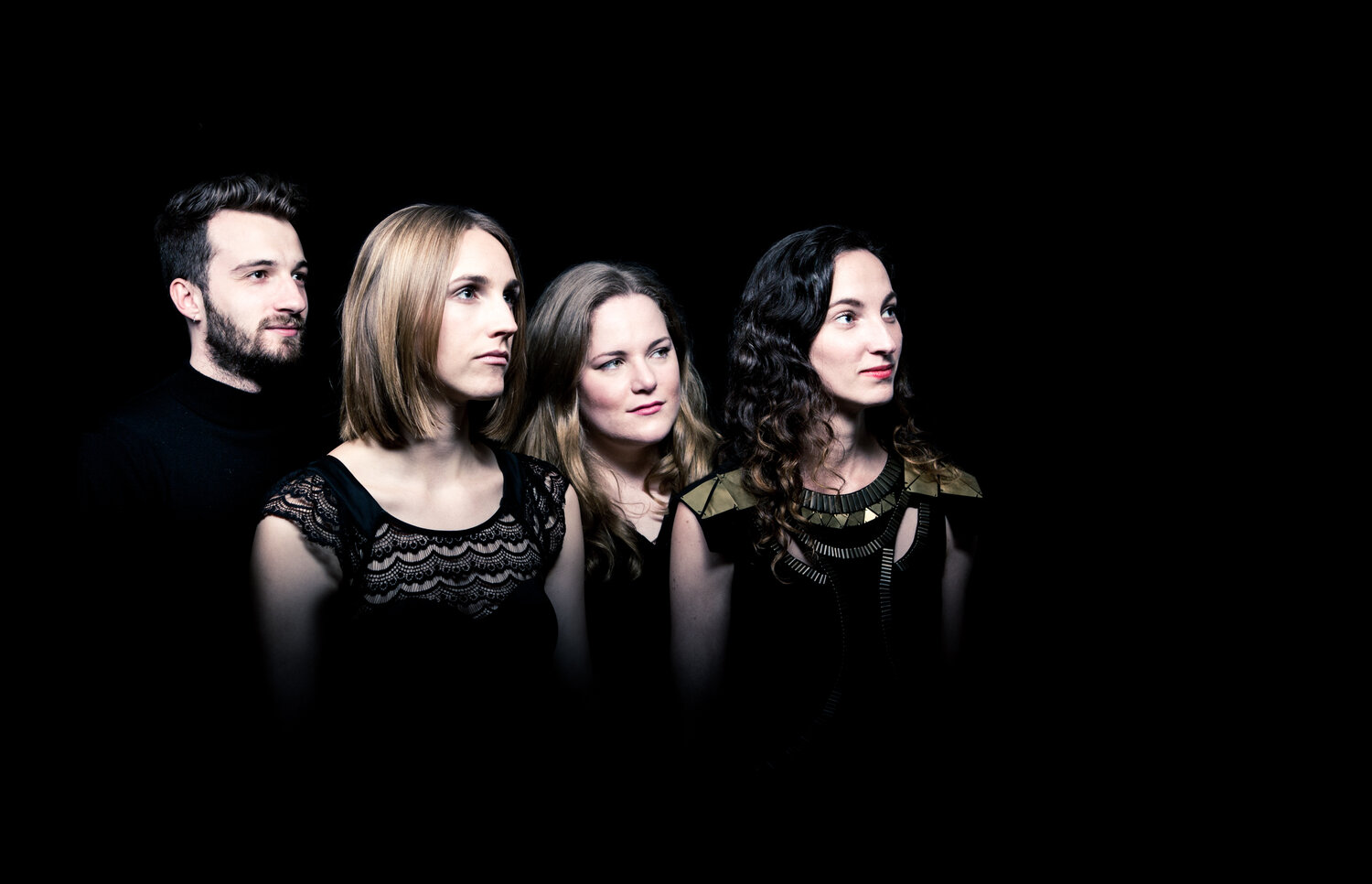Having established an admirable reputation since their formation in 2015, Rubiks Collective is attracting an enthusiastic and growing audience for their high quality performances of contemporary compositions, many which include Australian or world premiere performances, unconventional and challenging soundscapes, and always, a balanced relationship between acoustic, technological and audio visual sound sources. With the audience seated in the round in the Primrose Potter Salon, and musicians Tamara Kohler (flutes) Gemma Tomlinson (cello) Jacob Abela (piano, keyboard) and Kaylie Melville (drum kit, percussion) centrally placed with a fine spread of instrumental sound sources, a close connection with the audience was guaranteed. Further anticipation for this event was also enhanced by the praiseworthy annual commission by Rubiks, for a project by an Australian female or gender nonconforming composer – the Pythia Prize – with the 2018 winner, Christine McCombe, being present for her work Waiting, which opened the program.
 Rubiks Collective
Rubiks Collective
Almost like a haiku poem, the flowing text – “Beneath the noise – Quiet voices unheard – Waiting For the Pause” – signposted a two-part structure for this programmatic soundscape. Its opening was full of gusto, as the quartet pushed their instruments into a dense fog, with unconventional techniques, and traditional instrumental styles, vigorous improvisatory “noises”, agitation, free improvisation, blending and blurring until the fading of a cymbal roll diminished the tension. Individual instruments then found their voices with melodic scale patterns rising first from solo cello accompanied by lingering vibraphone harmony, with a hint of romanticism, and the flute and gentle piano accompaniment joined with sweet effect. Sometimes the flute was lost as percussion and bass drum crescendos and atonal “noise” re-surfaced. A rising soft cello solo took us to an extended pause and restful silence, from which emerged a highly contrasting second section, with colourful and free high arpeggios in conversation between piano and vibes. Memories of classical timbres, tempo, rhythm and harmony emerged, a simple sustenance came from tonal and resonant chords on the vibes, and other voices joined in ascending unison lines which lingered, almost resolving, leaving us hanging on, waiting for the final pause. This was a truly fine performance.
Gemma Peacocke, composer of Quiver, chose the title for its significant double meaning – “to tremble with fear or emotion, or a case for arrows” – tension and resolution. Hamish Gullick (double bass) entered as the musical protagonist, at first announcing a strong driving masculine sonority with solo jazz riffs, which built with short, sharp accents as tom-tom and piano added insistency from a driving pulse, until long sustained bass notes diminished the emotion. Both inside strings and outer frame of the piano became a percussion instrument, adding almost a metallic effect to the variety of colourful changing dynamic levels. With the increasing tempo and repetition of strongly accented drum rhythms and changes of metres, a threatening and primitive tribal atmosphere took control. This exciting jazz influenced work highlighted both the exceptional skills of the Rubiks soloists, and their brilliant and focussed teamwork, as precise timing was paramount in this exciting work.
Adding electric guitar (Sophie Marcheff) and bass clarinet (Natasha Fearnside) to the ensemble for Fields, composed by Anna Thornvaldsdottir, allowed more languorous, contemplative and colourful suggestions, as single low sounds, almost like gentle drones conversed with sparse piano and percussion. Single free notes, patterns from nature, impressions of wind, earth and wood, were sprinkled freely and calmly between gentle rolls and vibrations from piano and percussion with random guitar melodic fragments.
Composer Sara Glojnarić researched the Hollywood era with its black and white TV advertisements of the 1950’s, exploring the sight and sound of one truly classic female portrayal of the times for her work Indispensable Ms. Jones. A commercial for a photocopier machine showed secretary Miss Jones demonstrating the machine with a prescribed ‘feminine’ script, which became the composer’s source for a visually imaginative contemporary re-configuration. The highly inventive, cleverly manipulated soundtrack, jumbled and phased the text of the new Ms Jones in a liberating metamorphosis of speech rhythms, jumbled words, almost subtle rebellion with its echoing and de-construction. The favourite instrument of the 50’s, the electric guitar, added fragmented effects, and with distortion, pitch bending on synthesiser and cello, experimental fluttering and breathlessness on woodwind, the office atmosphere was felt strongly. I could feel the exclamation marks jamming the machine as taped interjections and punctuations from the snare drum added a free improvisatory effect to the production line. Ms Jones had the last word when the boss called. “I’m ready now.” Thanks to the photocopier.
Sculptress by Nicole Lizée is a nostalgic, historical tribute to Delia Derbyshire, an influential British electronic sound pioneer famously known for her work on the Doctor Who theme. Adding violinist Isabel Hede to the Rubix Collective, the ensemble performed a complex orchestration of myriad techniques – freestyle, mechanical and synthesised sounds, electronic ostinatos, blurred arpeggios, glissandos, colourful harmonic chords, a full kaleidoscope of possibilities, which accompanied the visual creation of composing and de-composing of a large painted manuscript. The film of the composer surrounded by recording equipment interspersed with colourful memories of the sixties and psychedelic explorations in art forms inspired a stimulating score. The new voice of the synthesiser had the final say with a soft oscillating sound wave.











Comments
Log in to join the conversation.